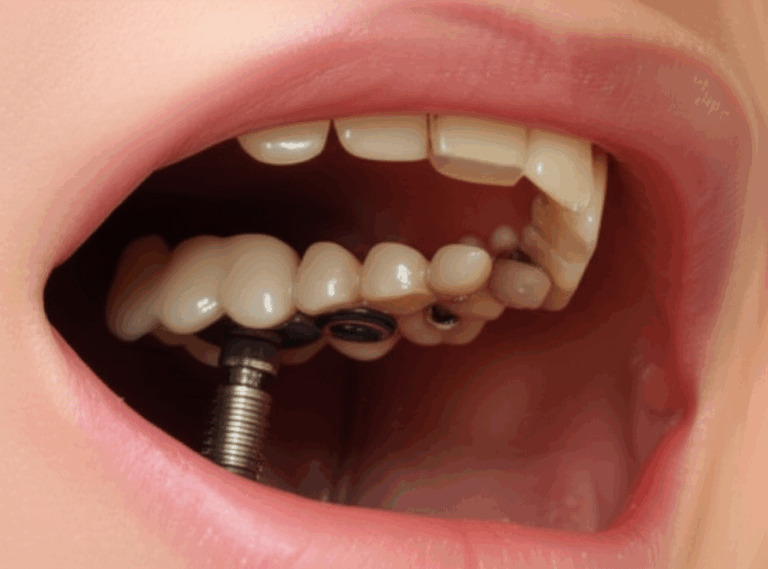
A Comprehensive Clinical Guide to Applied Dental Materials: Selection, Application, and Troubleshooting
Are you a dentist or dental student who wants to get better at picking dental materials? This guide will walk you through everything you need to know—from choosing the right material for each job, to fixing problems when things don’t go as planned. I’ll share real-life tips, answer common questions, and help you use the best tricks with confidence in your dental work. Help your patients get their best smile every time. Ready? Let’s get started!
Table of Contents
Why Are Dental Materials So Important?
Think about trying to build a strong house with weak bricks. You wouldn’t do that, right? Dental materials are like those bricks for every fix in your patient’s mouth. If you use a bad material or the wrong type, it won’t last long. Even worse, you might cause pain or infection.
Good dental materials help you to:
- Fix teeth so they look—and feel—real.
- Make sure repairs last many years, even with strong chewing.
- Avoid allergies or bad reactions for your patients.
- Stop decay, stains, and pain.
But here’s the thing: there are so many choices, and every year new fillings, cements, and other stuff show up. Which one should you use and when? That’s what this guide will help you figure out.
What Makes a Good Dental Material?
For a material to be really good in the clinic, it has to have a few key things.
Biocompatibility
The biggest thing is that dental materials must be safe. You want to be sure what goes in the mouth won’t hurt the gums, cause a reaction, or make someone sick.
Materials like composite resins, zirconia, and glass ionomer cement (GIC)—have been tested again and again for safety. But even so, sometimes things like nickel in some metals or parts in some resins can cause a skin reaction or rare allergies. So always read the material safety sheet, and check your patients’ stories.
Mechanical and Physical Properties
A good material must be strong enough to handle biting every day and not crack from chewing. This means:
- Wear resistance: Will it wear out, or stay the same over time?
- Fracture toughness: Can it handle something hard, like biting on popcorn?
- Adhesion and bonding ability: Will the material stick right to the tooth, or will it let go and cause decay?
- Thermal properties: Will it get bigger and smaller with hot or cold foods, causing leaks?
For example, lithium disilicate (E-max) is used a lot because it’s strong and looks good. Amalgam lasts long but doesn’t look natural.
Looks and Lifespan
Patients want nice-looking teeth! That’s why composite resins, porcelain-fused-to-metal (PFM), and ceramics matter for smiles. But remember, the prettiest tooth filling isn’t good if it falls out in 2 years. Your material should last—like 5, 10, or even more years.
How Do You Choose the Right Restorative Materials?
Every cavity or broken tooth needs a certain material based on the place, what the patient needs, and what you know how to do.
Composite Resins
Composite resin is used for most cavities. It’s tooth-colored and sticks right to tooth parts. Modern composites come in many types—bulk-fill, flowable, and more—each good for something different.
Here are some tips:
- Front teeth: Use a composite that polishes up nice and looks real.
- Back teeth: Pick one that is strong for chewing.
- Small holes: Sometimes glass ionomer cement is enough. GICs even give off fluoride to help patients who get lots of cavities.
Be careful to stop problems like composite shrinkage so the filling doesn’t pull away from the edge. This can cause pain or a new hole. Use small layers and good light curing to get the best results.
Amalgam
You might still see dental amalgam for bigger fillings, like when cost is a worry, or where looks aren’t important. Amalgam is strong and can last more than 10 years when done well. The downsides? It doesn’t look like a real tooth and isn’t liked as much now because it has mercury and other options are better.
Glass Ionomer Cement (GIC)
For kids or older people, try GIC or resin-modified GIC. These are good for small holes, temporary fillings, or under composites. They are gentle on the tooth and let out fluoride, which helps people with a lot of decay.
What’s the Difference Between Direct and Indirect Materials?
Let’s make it simple:
| Type of Restoration | Made | Main Materials | Examples in Clinic |
|---|---|---|---|
| Direct | In the mouth | Composite resins, GICs, amalgam | Fillings, some sealants |
| Indirect | In a lab | Ceramics, alloys, plastics | Crowns, bridges, dentures |
Direct restorations save time—you fix the tooth right in the chair. When you need more detail, like a special-made crown or bridge, you use indirect. These are built outside the mouth, by workers at a dental ceramics lab, zirconia lab, or crown and bridge lab.
For indirect repairs like inlays, onlays, or dentures, work with a trusted removable denture lab. These labs use stuff like acrylic resin, PMMA, and sometimes blended plastics, which are strong and look like real teeth.
How Are Dental Ceramics and Alloys Used?
Dental ceramics, like zirconia, lithium disilicate, and feldspathic porcelain, are tough and look really good. Here’s what you need to know.
Ceramic Crowns and Veneers
If your patient wants nice-looking teeth, ceramics give both strength and the look of real teeth. Materials like zirconia and E-max are used for crowns and veneers because they don’t turn color and copy natural enamel. Digital tools mean you can scan a mouth and get a perfect fit fast.
Ceramic crowns can last a long time—research says zirconia crowns can last over 10 years with up to 98% still working.
Metal and Metal Alloys
There’s a place for gold alloys, base metals, and titanium. These are used for long bridges, partials, or when someone has a strong bite. Gold is gentle on other teeth and can mix with a ceramic crown too.
Which Impression and Luting Materials Work Best?
Impressions are like plans for dental work. You can’t make a good crown without a good mold.
Impression Materials
Popular choices:
- Polyvinyl siloxane (PVS): Shows small details, easy, and works well.
- Polyether: Works in wet places, gives good detail.
- Alginate: Cheaper and simple, but not as exact for long-term work.
Take care to use these right and always clean them well to keep everyone safe.
Luting Agents (Cements)
Once your crown or bridge is ready, you need something to hold it in place. That’s where cements like resin-modified glass ionomer or zinc phosphate are handy. The right cement keeps the tooth repair safe and helps stop leaks or falling out.
What about Dental Implants and Bone Grafts?
Dental implants are tiny posts, often made of titanium, put in the jawbone to hold a fake tooth (crown). These change everything for people missing teeth. Most implants last 10 years or more, with success rates over 95%. The key is the implant bonding with the bone. Sometimes, bone repair stuff like hydroxylapatite or other special materials help new bone grow first.
Good implant dental laboratory workers use materials like zirconia abutments to connect the crown to the implant for both strength and looks.
What Can Go Wrong? Troubleshooting Dental Materials
Even if you follow every step, stuff can still go wrong. Problems can be:
- Restoration breaks: Often because the material was too weak or the chewing was too strong.
- Debonding: The repair comes off. Usually, this means poor glue or the wrong cement.
- Post-op pain: The patient comes back, saying it hurts. Could be from composite shrinkage, leaks, or over-treated teeth.
- Stains or discoloration: Common with rough composites or old fillings.
- Allergies: Not very common but serious if they happen, mostly with metals or resins.
If something fails, ask:
- Was this the right material for this tooth and bite?
- Did you handle and store everything right (keep dry, check expiry)?
- Did you cure the filling right?
Learn from every mess-up and get better next time. That’s how you become really good at this.
What’s New in Dental Materials?
Dentistry always moves forward.
Bioactive and Healing Materials
Now there are materials that don’t just fill holes—they help the tooth heal! Things like calcium silicate cements (MTA) and new bioactive fillings help teeth fix themselves.
Nanotechnology
New fillings with tiny, nano-sized parts are stronger and shine better. This is something to watch.
3D Printing
3D dental lab systems let labs make crowns, bridges, and even dentures quicker, with fewer mistakes. It’s changing things a lot.
Digital and AI Tools
Scanners now fill in for old sticky impressions. AI helps place implants, spot problems, and can even tell you which material might work best.
FAQ: Fast Answers To Common Dental Material Questions
Q: How long do composite fillings last?
Most composite fillings last 5-7 years if kept clean, but some can stay even longer.
Q: Are metal crowns better than ceramic crowns?
Both are strong. Ceramics look better, while metal (like gold) can last longer at the back of the mouth.
Q: Can I use the same cement for every crown?
No! Match the cement with both the tooth and type of crown for best results.
Q: What should I do if a patient has a metal allergy?
Go for metal-free choices like all-ceramic crowns, and always ask about allergies up front.
Q: Why did my filling fall out?
It could be from bad bonding, shrinkage, or too much biting pressure on that tooth. Check your steps and maybe use something stronger next time.
Key Points and Takeaways
- Picking the right dental material is a big deal for every tooth repair.
- Think about safety, strength, looks, and how long it will last.
- Choose chair-side or lab-made fixes based on what’s best for the job.
- Use good labs for special-made ceramics, dentures, or implant parts.
- New things like 3D printing, healing fillers, and digital tools are making big changes.
- Always think about what could go wrong so you can fix it fast if it does.
- Keep learning—the world of dental materials is always changing!
- Work with great dental labs, such as a solid digital dental lab, to give your patients long-lasting smiles.
References
Your patient’s smile is your calling card. Make it last by picking the right dental materials, every time.








